Horyu-ji Temple, The World’s Oldest Wooden Structure
If you could only pick one temple, in all of Japan to visit it might feel overwhelming. With literally hundreds of temples all over the country, each steeped with so much history and beauty, the decision could seem daunting. However, the answer is actually quite easy: Horyu-ji Temple in Nara. Containing many of the world’s oldest wooden buildings, and with as many as 19 national treasures, Nara’s Horyu-ji is, at least in our opinion, one of the most valuable temples in Japan. In other words, Horyu-ji Temple is a “treasure trove of national treasures”.
We will cover the Sai-in Garan in this post. Check out the east temple grounds and the other national treasures too!
The History of Horyu-ji Temple
Horyu-ji Temple dates back to the early 7th century. Inside the temple’s kondo, the back of the statue Yakushi Nyorai [薬師如来] is an inscription that says Horyu-ji was built in the hope of curing illness of Emperor Yomei. Sadly, the emperor died before construction of the temple was completed. As stated in Emperor Yomei’s will, Empress Suiko and Prince Shotoku built Horyu-ji Temple to enshrine the statue of Yakushi Nyorai in 607.
Historians long believed that Horyu-ji Temple never sustained any substantial damage or changes since its completion at the beginning of the 7th century. However, archaeologists uncovered evidence near the temple’s current site that indicates original Horyu-ji once burnt down in 670. The Nihon Shoki also says that Horyu-ji burned down at that time. Despite needing those repairs, this still makes Horyu-ji Temple the oldest collective wooden structure in the world.Unfortunately, there are many mysteries as to who rebuilt the temple and why it did they move the location when was rebuilt?
Getting to Horyu-ji Temple
While Kintetsu is the easiest way to travel around Nara, Horyu-ji is only accessible from the JR Line. To Horyu-ji, take a JR rapid service train on the Yamatoji Line from Tennoji or Osaka Station; this should take roughly 30 minutes. If you are already in Nara, you can take the same Yamatoji Rapid Service at JR Nara Station and you will be there in only 10 minutes.
[mappress mapid=”92″ width=”95%”]
Once you get to JR Horyu-ji Station, you have to walk 20 minutes to Horyu-ji Temple.
Bus Option
If you prefer, you can get a bus at Nara Station that takes you right in front of Horyu-ji Temple, as well as many other major attractions in Nara City. But keep in mind, it runs only once an hour and it takes an hour from Nara Station.
Walking Route
Walking from JR Horyu-ji Station to the temple is pretty easy. However the road to the temple doesn’t really look like it would take you to the most famous temple in Japan. Trust us though, you are going the right way.
Once you get out from the station, head north along Route 5 and turn left when you see this and go down this street:
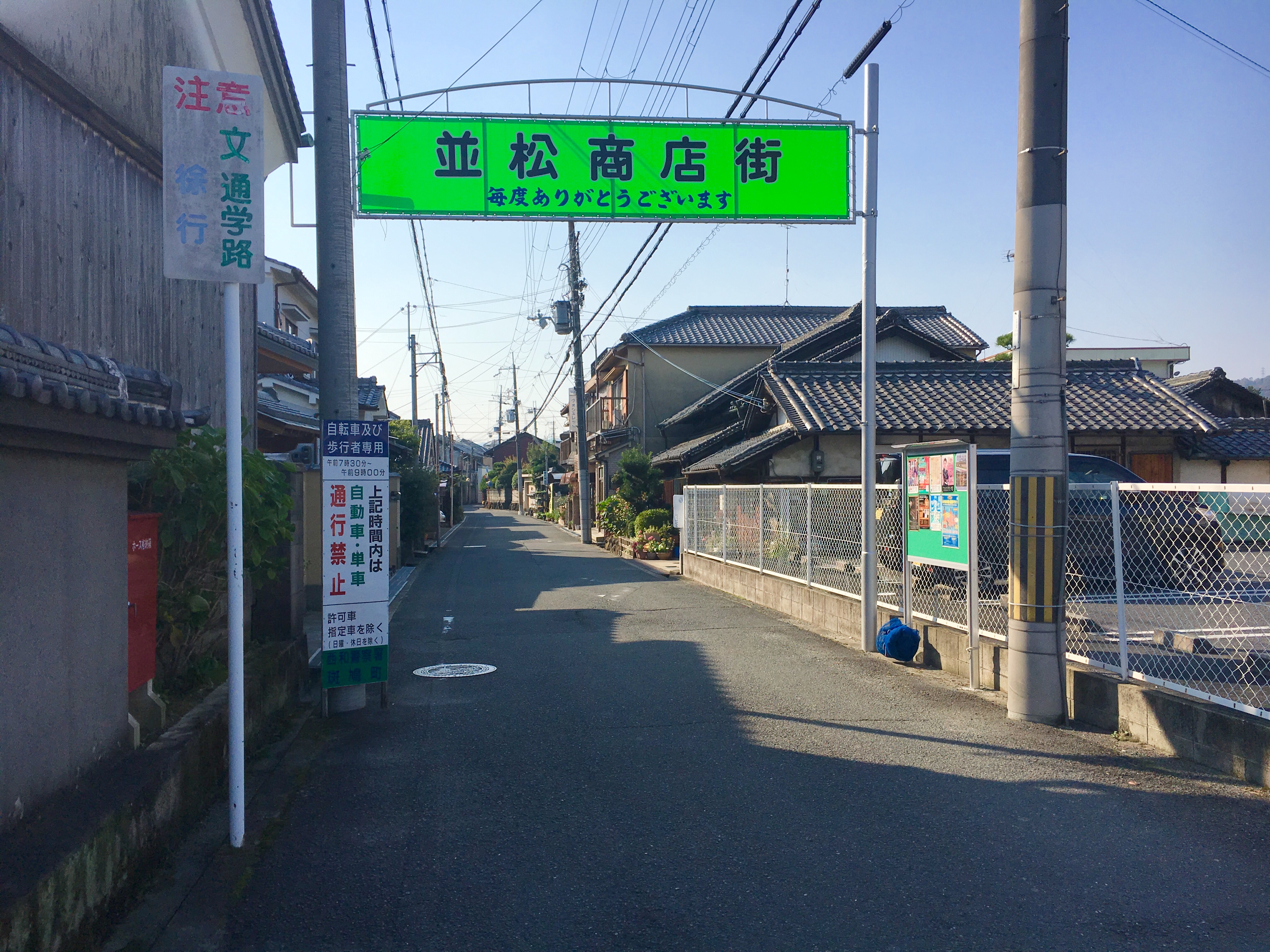
After that, it is just a few more minutes to the temple.

Temple Grounds
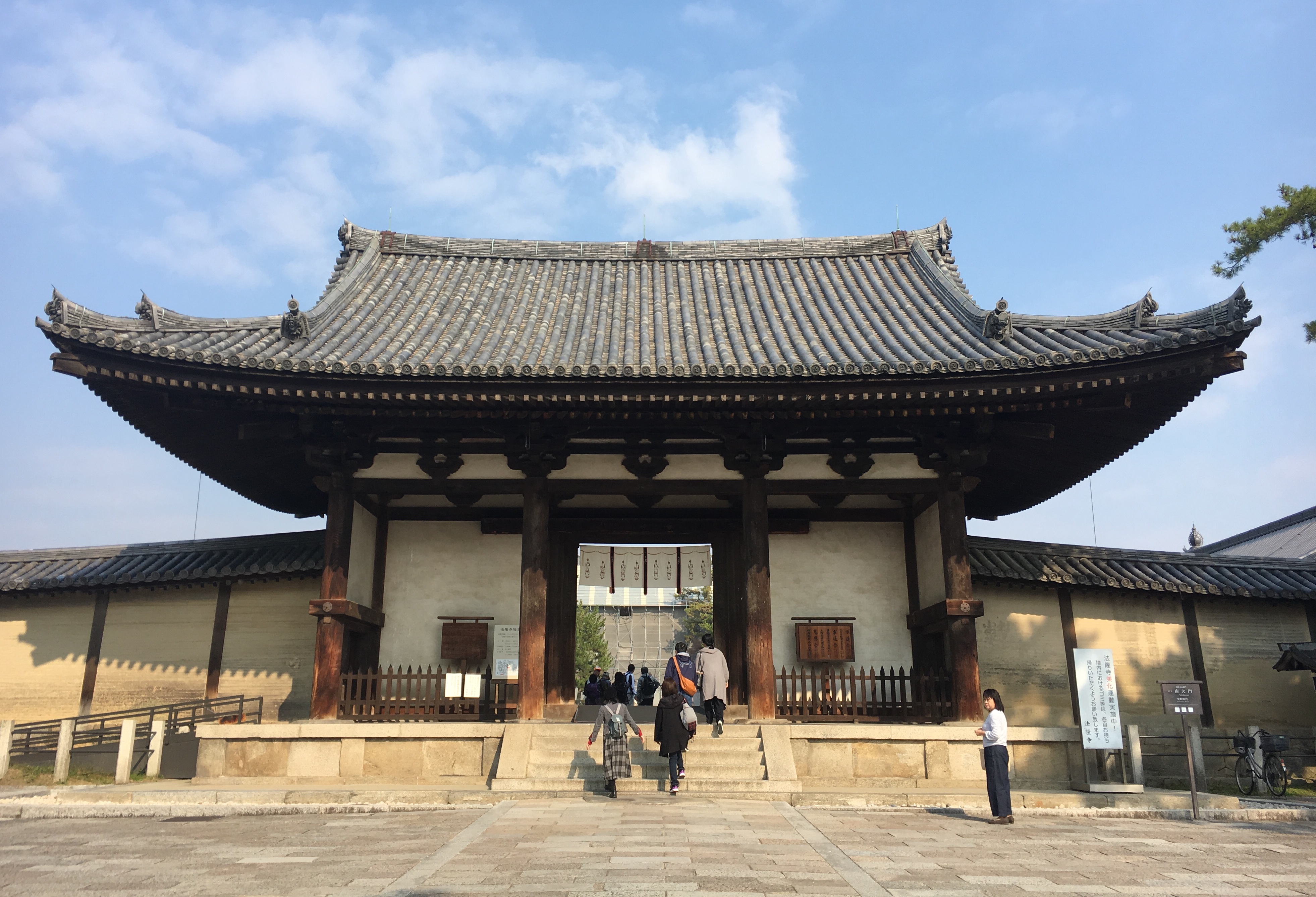
Watching over the entrance of Horyu-ji is the Nandai-mon Gate. Nandai-mon was rebuilt in 1438 and normally that would make a structure too new to qualify as a Japanese Nation Treasure—yet it is. There are so many carefully crafted small intricate details are so unique that, despite its age, allow it to be classified as a national treasure.
Once you go through the gate, before long you will see the Chumon Gate. Chumon Gate is one of the Japanese National Treasures at Horyu-ji Temple as it clearly exhibits characteristics of 7th century Asuka Period architecture. The statues on the either side of the gate are from 711 and are the oldest in Japan. Surprisingly these are not national treasures. Because both of these statues are kept outside, they have endured a lot of wear and tear over the centuries. Being forced the weather the elements has resulted in the statues needing frequent repairs, ultimately causing the statues to gradually change their appearance over time.

The entrance fee for main area is 1,500 yen per person. Yes, it is quite expensive but this covers your admission not just the Sai-in, but the To-in Garan and the museum too.
Inside the Sai-in Garan
Once you get in the main area, you will see the kondo, the pagoda, and so on. Since there are so many things to see here, we will only cover the most important things.
Kondo [金堂]
The kondo enshrines the most important Buddha statue in Horyu-ji, Shaka Nyorai [釈迦如来]. The kondo was built in the late 7th to the early 8th century and one of the oldest wooden structures in the world.
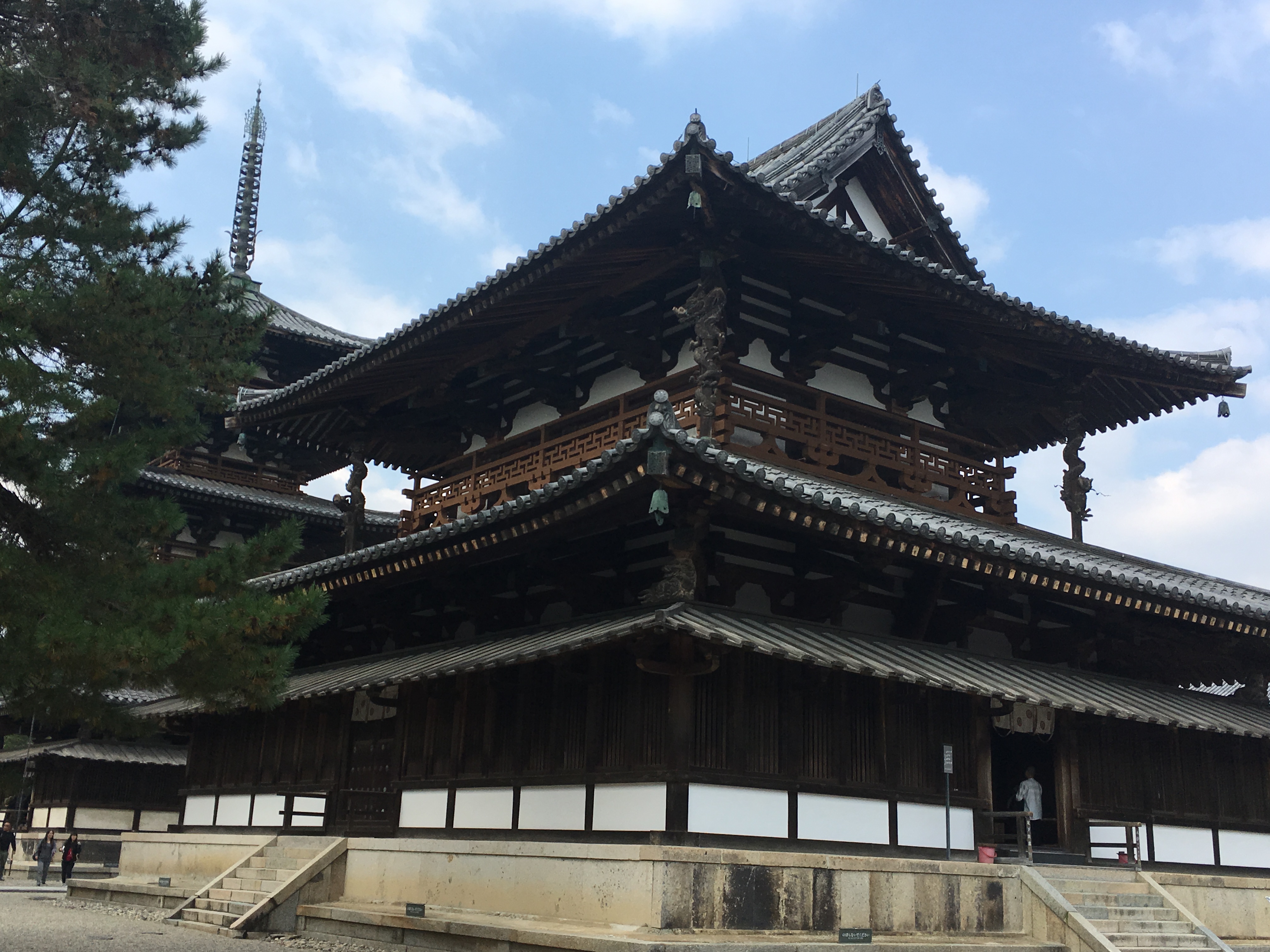

The kondo clearly displays characteristics of temples in the Asuka Period, which you cannot find in other temples. These characteristics include manji kuzushi [卍くずし] and hitoji-gata warizuka [人字形割束], which you can see in the railing of the picture above.
Asuka Period Buddha Statues
You can also go in to kondo and see statues of Shakasanzon [釈迦三尊像], Yakushi Nyorai [薬師如来像], and Amida Nyorai [阿弥陀如来像].
Specifically, the statues of Shakasanzon and Yakushi Nyorai were made by famous Buddhism sculptor Kuratsukuri no Tori in 623. From what we can tell, Kuratsukuri made Yakushi Nyorai in the hopes of curing Emperor Yomei illness in 607. He later made Shakasanzon, the main Buddha in the kondo, for when Price Shotoko took deathly ill.
These statues clearly display characteristics of Buddha statues made in the Asuka Period such as their almond shaped eyes and archaic smile.
Additionally, the kondo also houses the oldest statues of the Shiten-no, which stand in each corner of the building. While it is common for the Shiten-no to have very angry faces to frighten evil spirits, the Shiten-no here have rather placid expression.
Pagoda [五重塔]
At an impressive 31.5 meter, Horyu-ji Temple’’s five-story pagoda is one of the world oldest wooden structures. It is also the oldest five-story pagoda in Japan. A temple’s pagoda is the most important building in a temple housing sacred religious objects, like the remains of Buddha.

The interesting things about this pagoda’s center pillar came from one exceptionally tall tree. Also, each story gets smaller as you go higher.
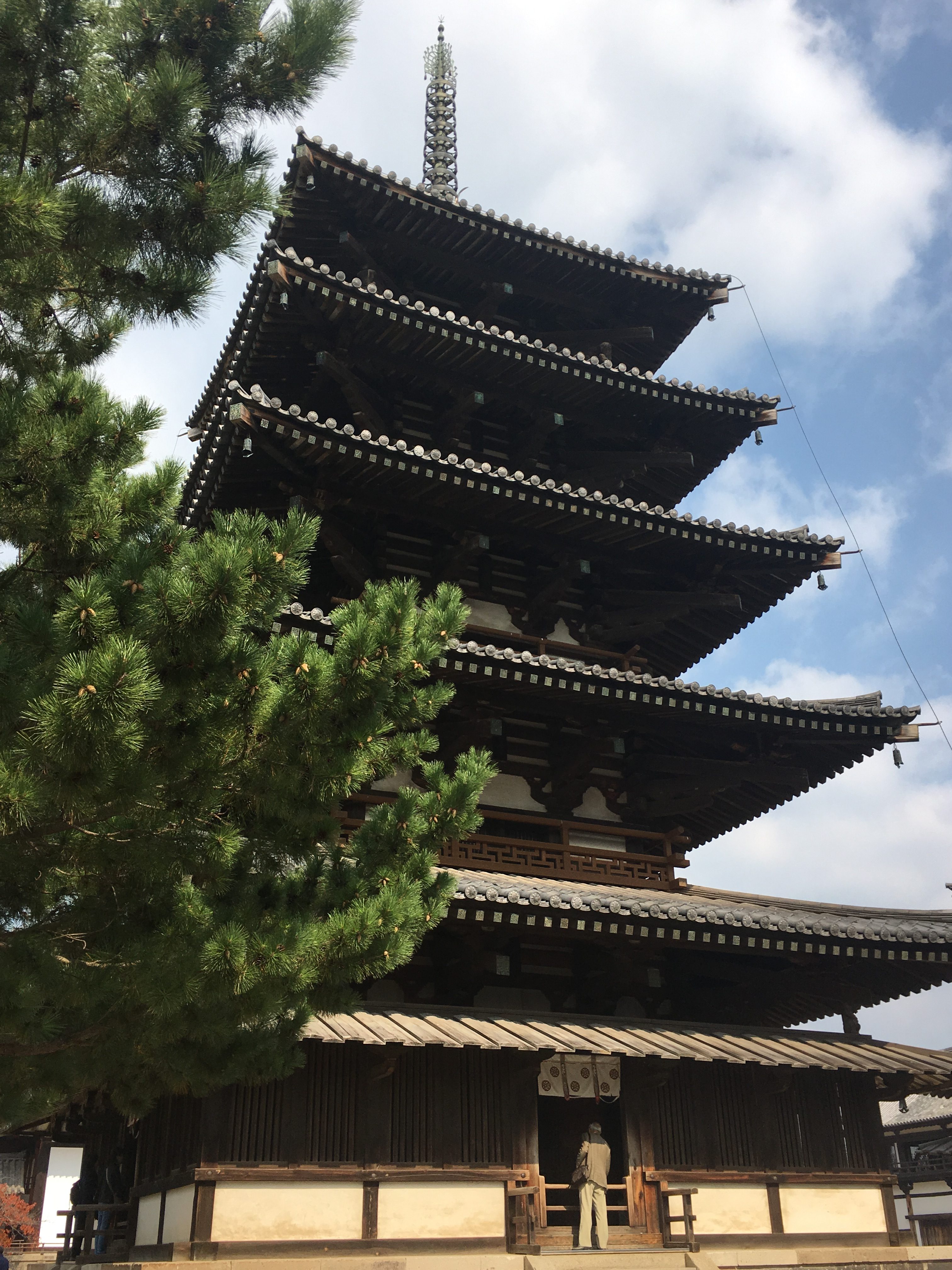
Inside the pagoda are clay statues depicting important religious scense, such as the death of Buddha. Unfortunately you cannot go inside the pagoda, and can only view the interior through peep holes around the outside of the pagoda.
Daikodo [大講堂]
In the back of the Sai-in Garan stands the Daikodo, which enshrines a statue of Yakushi Nyorai. In the Daikodo, monks would study Buddism. Currently, the Daikodo sometimes functions as a ceremony hall. Lightning struck the original Daikodo in 925 resulting in the building’s destruction. After its reconstruction in 990, they began enshrining Yakushi Nyorai.
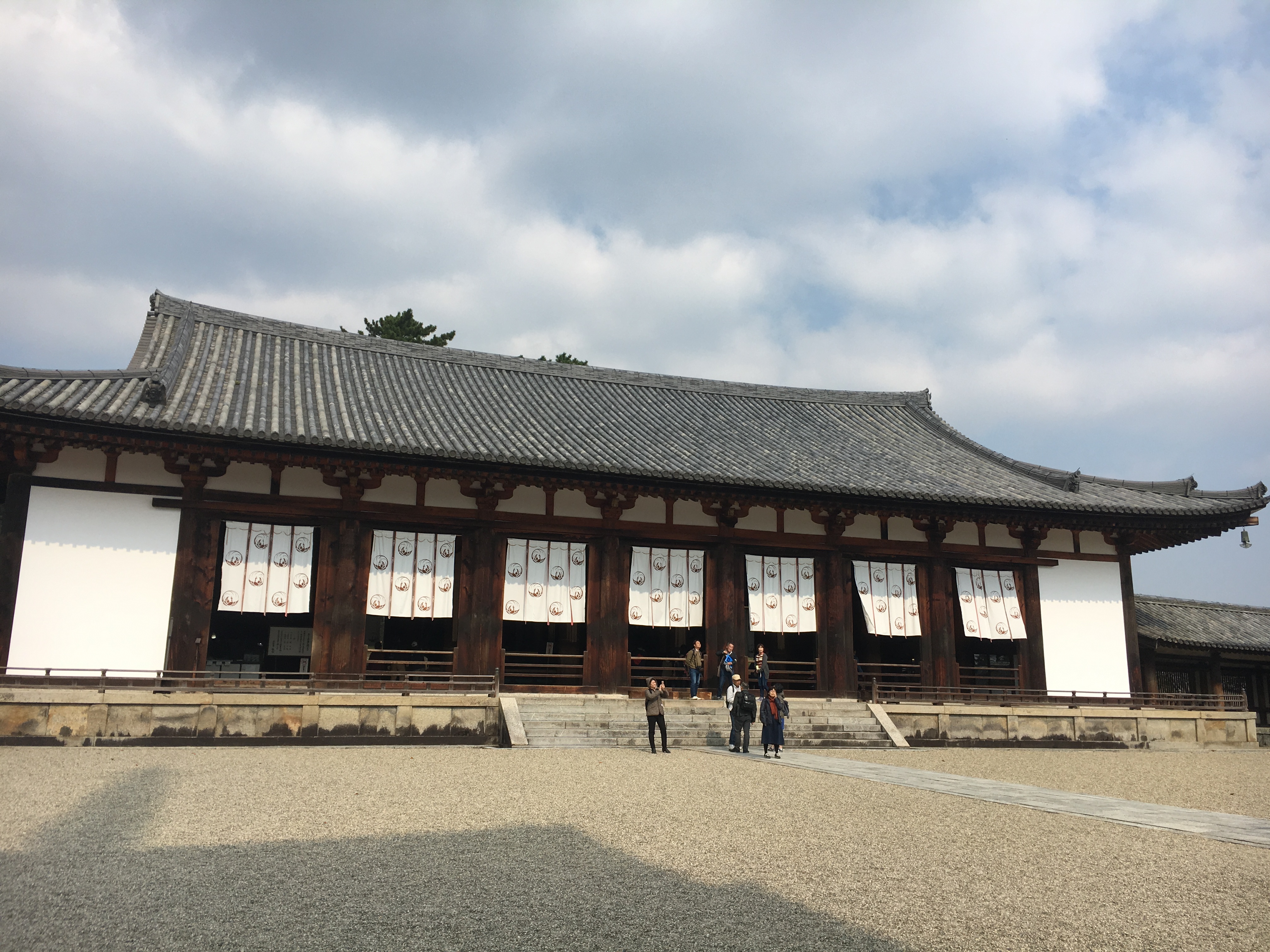
Additional National Treasures in Sai-in Garan
Those are the main buildings in the main area in Sai-in Garan, but there are other national treasures here too.
Kairo [回廊]
Like Shitenno-ji and many other temples, Horyu-ji is surrounded by a corridor, called a kairo. This corridor was also made in the same time as kondo and the other buildings, so it also is the oldest wooden structure in the world.

If you pay attention to the pillars in the corridor, you will see they have a particular shape; the middle is noticeably wider than the top and base. This type of pillar, called entasis, is common in Ancient Greek architecture. Entasis pillars in Japanese temples are exceptionally rare—in fact they are only found very ancient temples like Horyu-ji.

Kyozo [経蔵]
The Kyozo stands to the left side of the Daikodo and used to store many important books and papers, but is currently not open to the public. This is also a Japanese National Treasure building.

Bell Tower [楼鐘]
The original bell tower burnt down in the fire of 925. The current bell tower was built in 990 and it stores the original bell. Sadly, is the bell is secured in the tower and is not on public display. You can hear the bell in the morning late spring and summertime, from May 16th to August 15th.

Horyu-ji Temple: Sai-in Garan
| Address | 1-1 Horyuji Sannai, Ikaruga, Ikoma, Nara Prefecture 〒636-0115 |
| Website | http://www.horyuji.or.jp/ |
| Hours of Operation | Feb 20-Nov 3rd: 8:00-17:00 Nov 4th- Feb 21st: 8:00-16:30 |
| Admisson Fee | General Admission: 1,500 yen (includes admission to the To-in Garan and Museum) |
Don’t walk away just yet! There is so much to see and explore at Horyu-ji!
Coming next time, Horyu-ji Temple’s To-in Garan and Chugu-ji
The adventure continues…


Leave a Reply